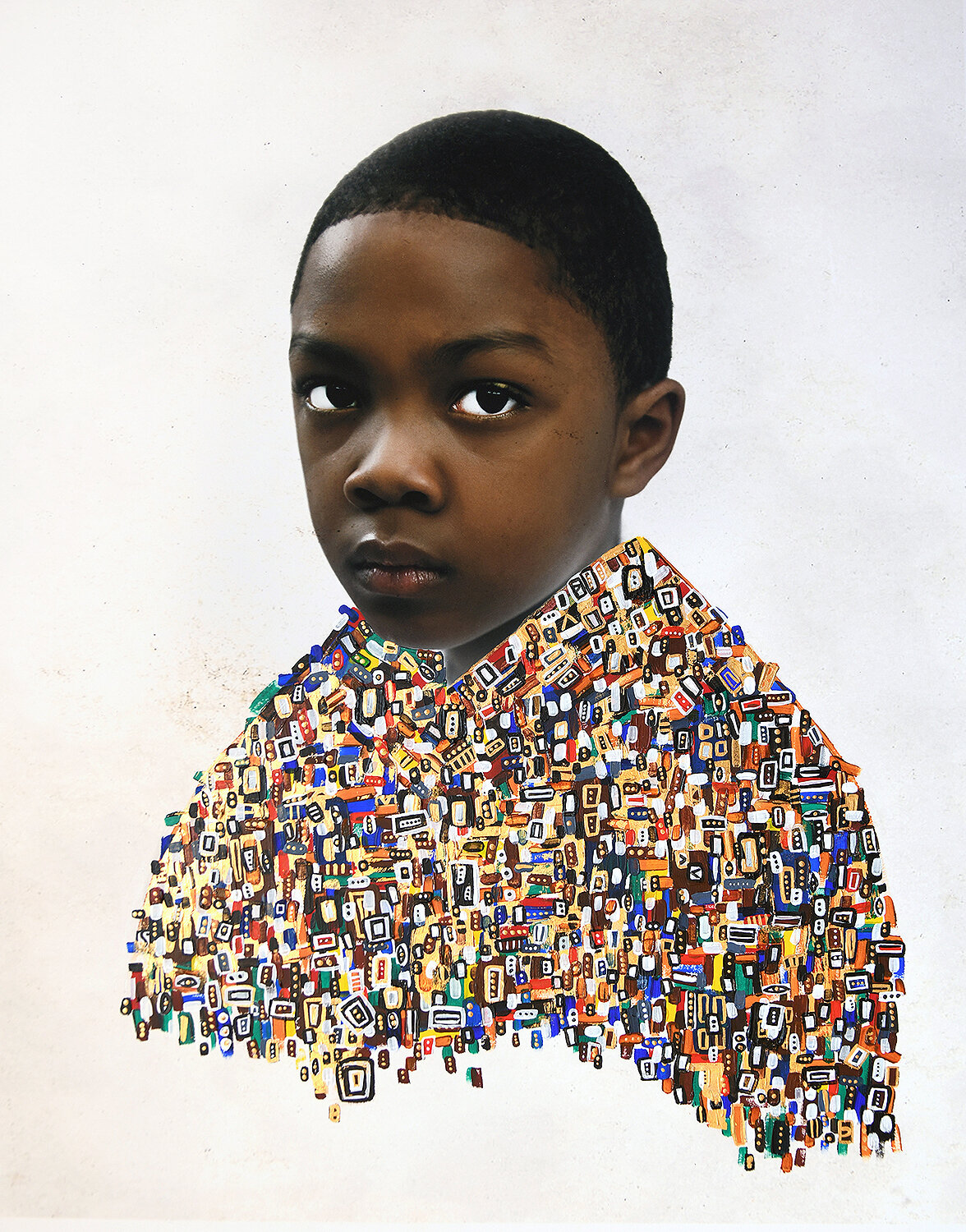Tawny Chatmon's "The Redemption"
The Redemption/St Michael George III, 24k gold leaf, acrylic, on archival pigment print.
© Tawny Chatmon, Courtesy Galerie Myrtis.
“Can I touch it?”
“How do you get it to curl like that?”
“Is it real?”
Chances are, if you are a Black woman or man, these are questions you have been asked before about your hair. Whether from ignorance, prejudice, or just curiosity, the nature of the kinks and curls of a Black person’s hair has always been a topic of great discussion, especially in the western world.
Roughly 400 years after slaves were brought over from Africa to help colonize America, the bias imprinted upon them because of the non-European texture of their native hair, which was referred to as “wool,” is still very much present.
In 2006, singer-songwriter India Arie released I am not my hair, a song that carried the narrative of acceptance regardless of the prejudice towards “nappy hair,” a term tied intimately to the production of cotton on slave plantations, as the tuft of the cotton which forms the plant before the harvest is called the nap.
In the western world, Black women are often considered more beautiful the more “un-nappy” their hair appears to be.
The Revelation/Glory, 24k gold leaf, acrylic, watercolor, ink, and gouache on archival pigment print.
© Tawny Chatmon, Courtesy Galerie Myrtis.
In her series, The Redemption, self-taught artist Tawny Chatmon, who has been working for the past 16 years in photography, pays homage to the magnificence of Black hair and Black culture whilst also calling attention to the proverbial and literal weight that each Black person carries upon their heads because of a perception that has been ingrained by racism.
In her artist statement, Chatmon said, “ Is there redemptive power in visual arts? Do artists have the ability to control and shift the narrative through their work? These are questions that inform my creative process while creating this ongoing body of work; I believe both to be true. In the same way that literature continues to be a tool for shaping the human psyche, I believe visual arts carry the same ability.”
The Redemption/God’s Gift, 24k gold leaf, acrylic, on archival pigment print.
© Tawny Chatmon, Courtesy Galerie Myrtis.
The models who are mostly children all have an array of hairstyles — braids with beads, locs, plaits embellished with ornate hair jewelry, Bantu knots, and “ afro puffs.” Some wear crowns, regalia that is representative of reclaiming the power of being Black with “ Black hair” and are dressed in the splendor of gold outfits befitting kings and queens. Some are in dresses, some in robes, littered in what appear to be intricate patterns of blues, reds, and blacks, appearing almost like precious gems. The gold contrast is made even more stunning when paired with the rich melanin of the model's skin.
The Redemption/I Have Yet to See the World, But I Still Have Hope, 24k gold leaf, acrylic, on archival pigment print. © Tawny Chatmon, Courtesy Galerie Myrtis
Chatmon took inspiration for The Redemption from Austrian artist Gustav Klimt and the glistening, gilded works he produced during his Golden Phase.
The Redemption/Castles, 24k gold leaf, acrylic, on archival pigment print.
© Tawny Chatmon, Courtesy Galerie Myrtis
The Redemption/Not on my Watch, 24k gold leaf, acrylic, on archival pigment print.
© Tawny Chatmon, Courtesy Galerie Myrtis
She captures the innocence, poise, and melancholy being exuded by each model. Their smiling, stoic or tear-stained faces beckoning viewers to see the allure and often unappreciated natural beauty and diversity of black hair.
The Redemption is a representation of Black vulnerability crowned and cloaked in dazzling gold; it is a strong affirmation of acceptance and celebration that showcases the true majesty of the kinks, curls, and coils of black hair.
To view more of Tawny Chatmon’s work, click here.













